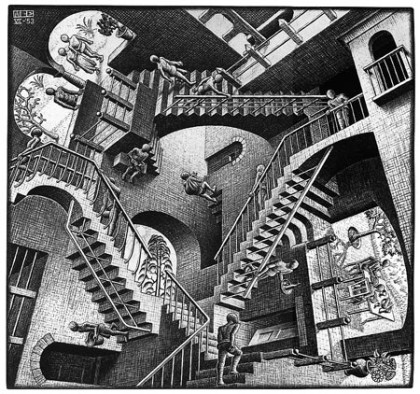Posted February 16th, 2015 at 2:01 pm1 Comment

Thoughts on Gesualdo and his music: part six
Robert Hollingworth
Rehearsing such pieces, one is struck by the extremely fine craftsmanship involved, but their realisation is like putting Escher drawings into 3-D, impossibilities seemingly held together in physical space through art (like Arthur Dent’s thrown Nutrimatic drinks machine cup in Douglas Adams’ ‘Hitchhiker’s Guide to the Galaxy’). The tuning challenges they present might lead one to an equal temperament approach to make the the chromatic shifts easier: yet only by aiming for pure acoustic intervals (called just intonation) at every step does the sheer brilliance of the chromaticism, the colour, come into focus. This requires a mental virtuosity quite apart from the vocal virtuosity that is sometimes required.
And yet, and yet, and yet… There’s a worry at the back of my mind. Is Gesualdo’s secular music anything more than a series of extraordinary moments? ‘Is this great music or merely weird?’, as my university tutor, John Milsom, said in a review of Gesualdo’s sacred music many years ago. (I had said something similar to him if cruder on being introduced to the madrigals just before.) I suppose, in the end, it is what it is: exteme in expression and highly harmonically advanced at a time and in a place where such things were prized (and very hard to sing). Elsewhere, Marenzio’s music was valued for the opposite reason: it was manageable to sing and very sweet to listen to.
Gesualdo’s music is without question intriguing, way ahead of its time, while still being of it. It will probably still be performed in another 400 years and even then will benefit from singers who can sing pure thirds.
The earlier posts on this subject from Robert can be found here: 1, 2, 3, 4, 5